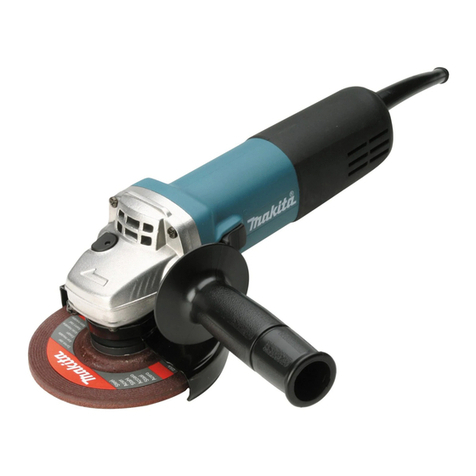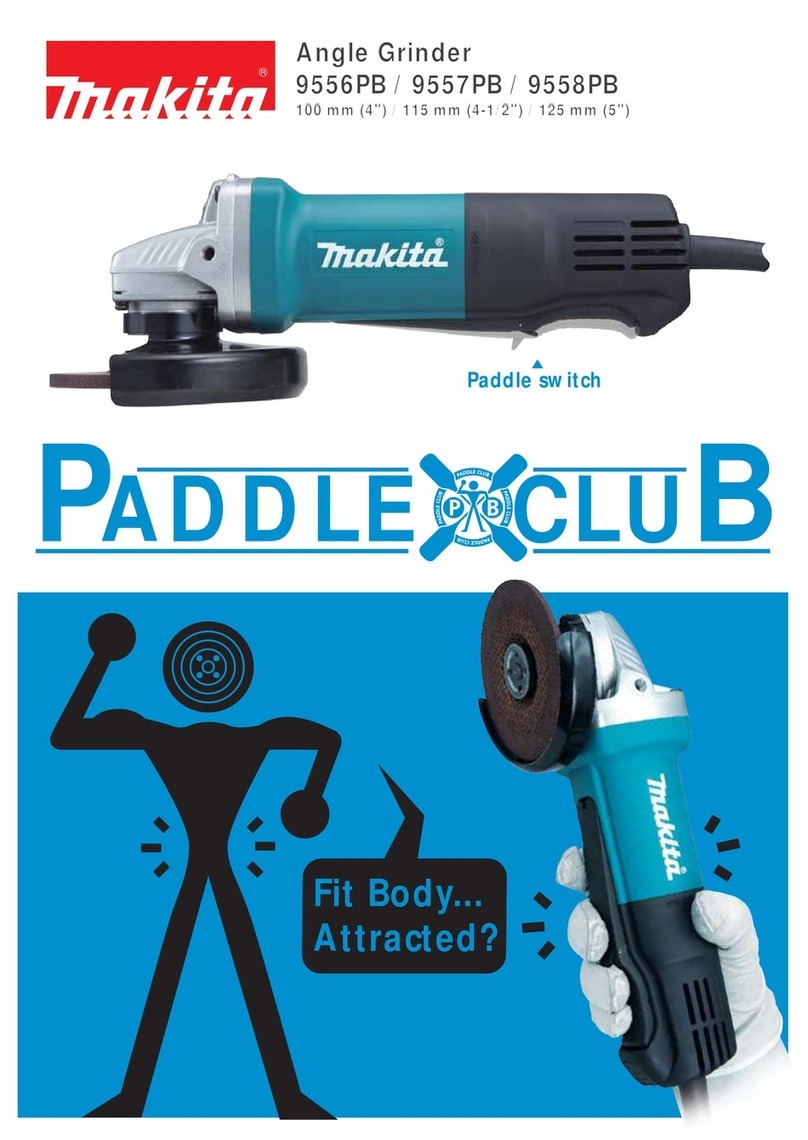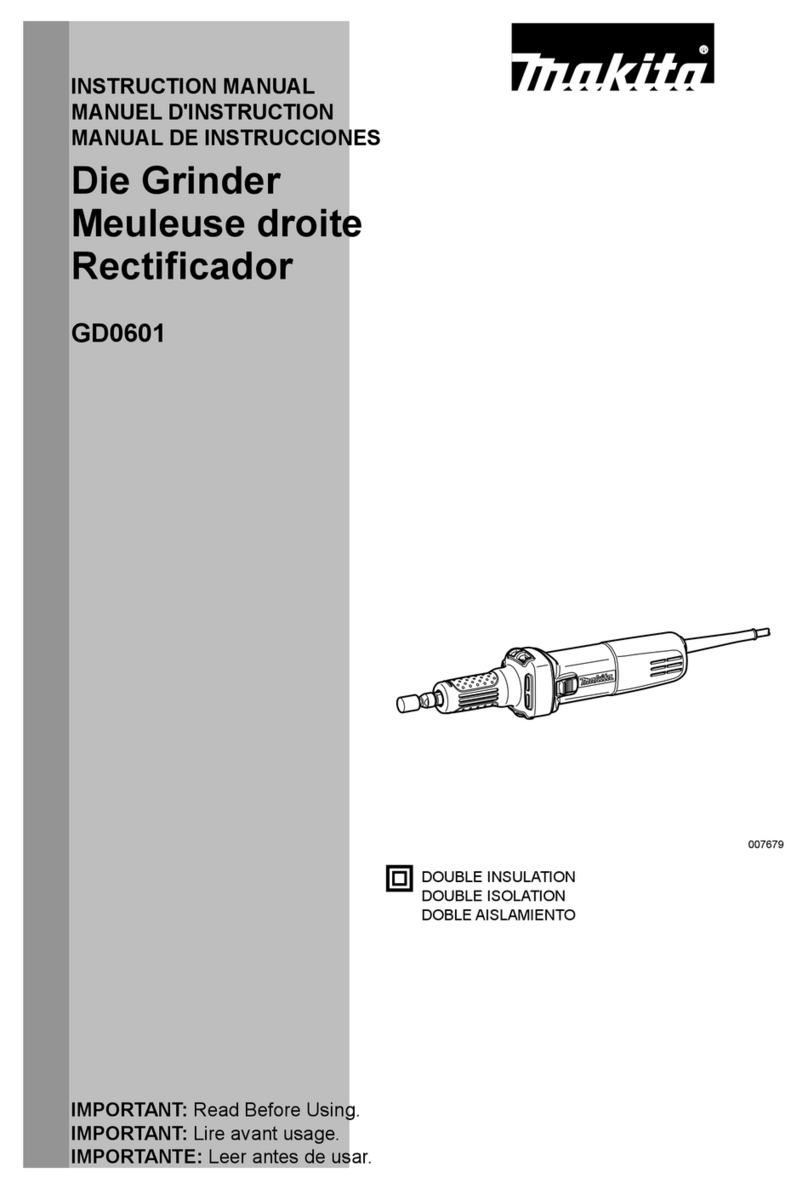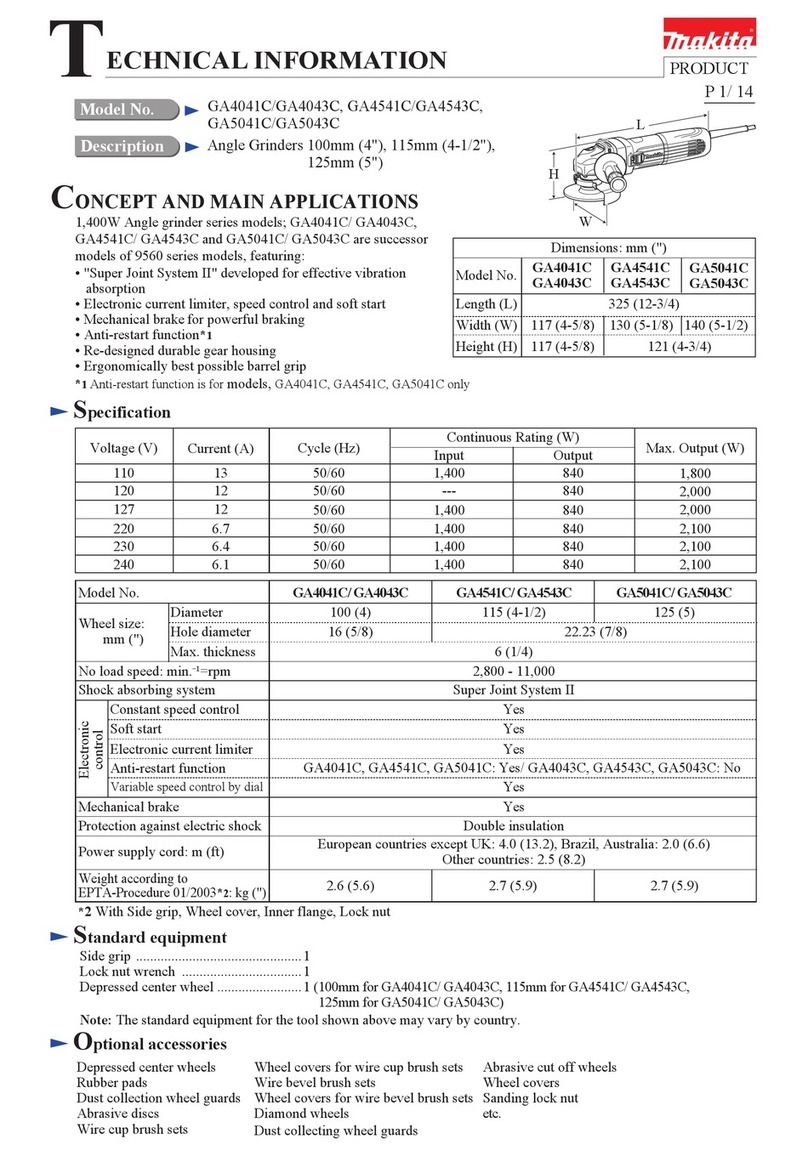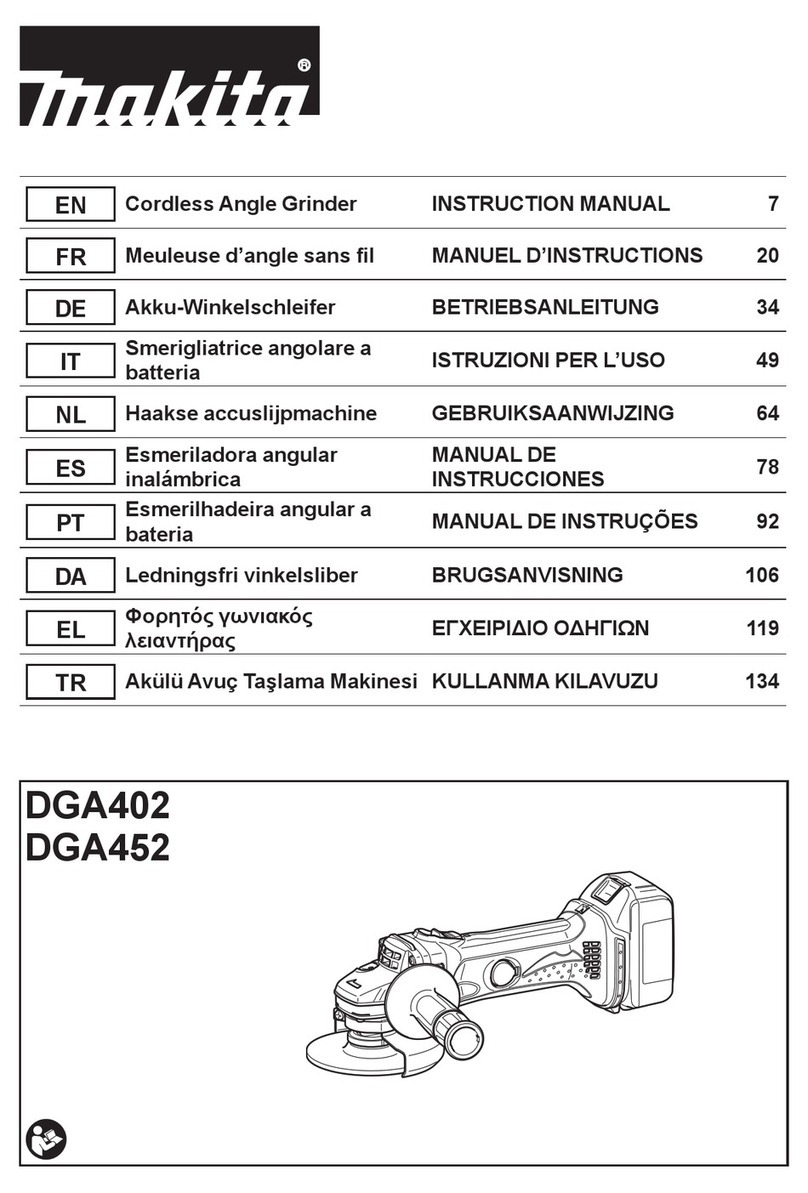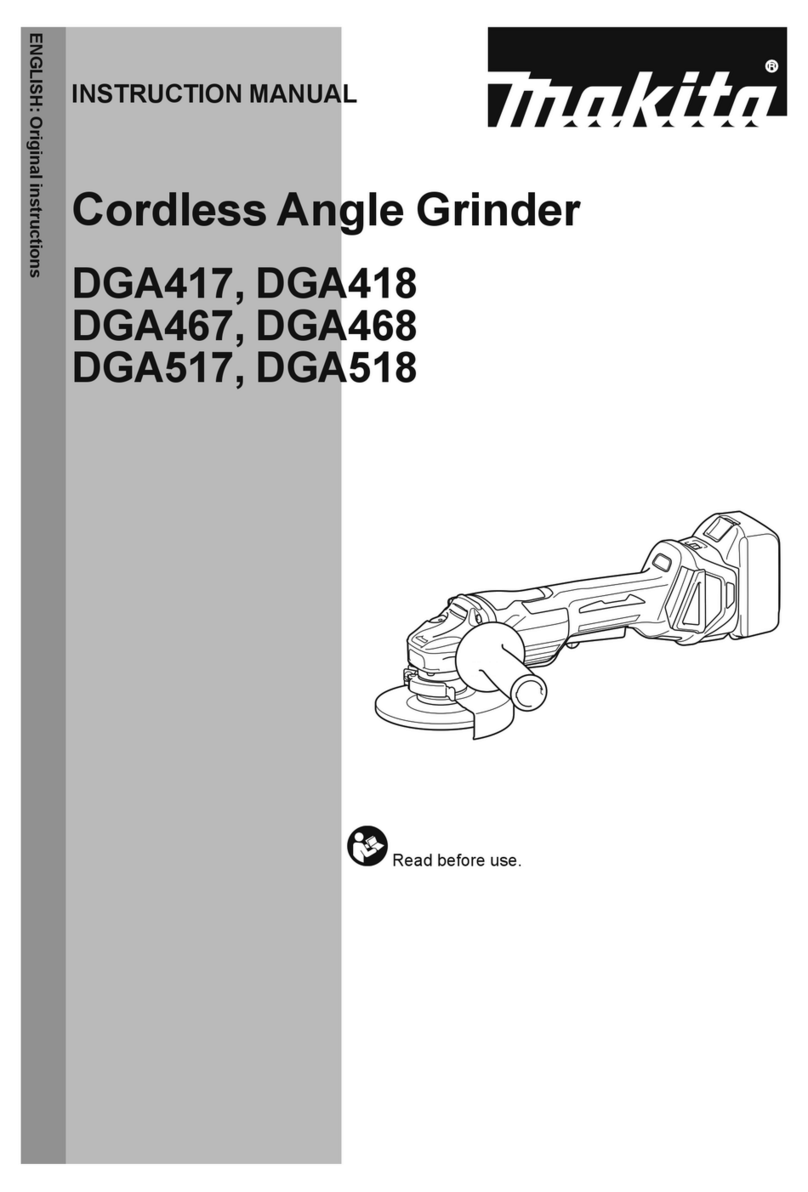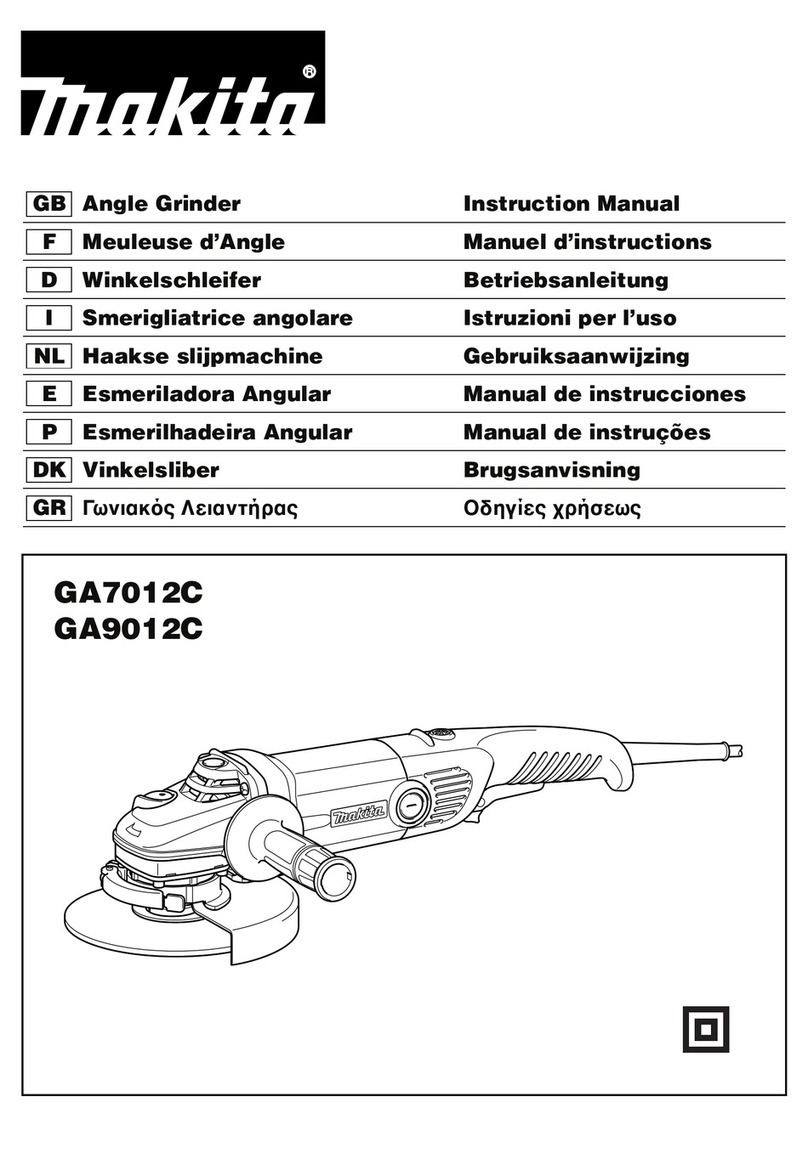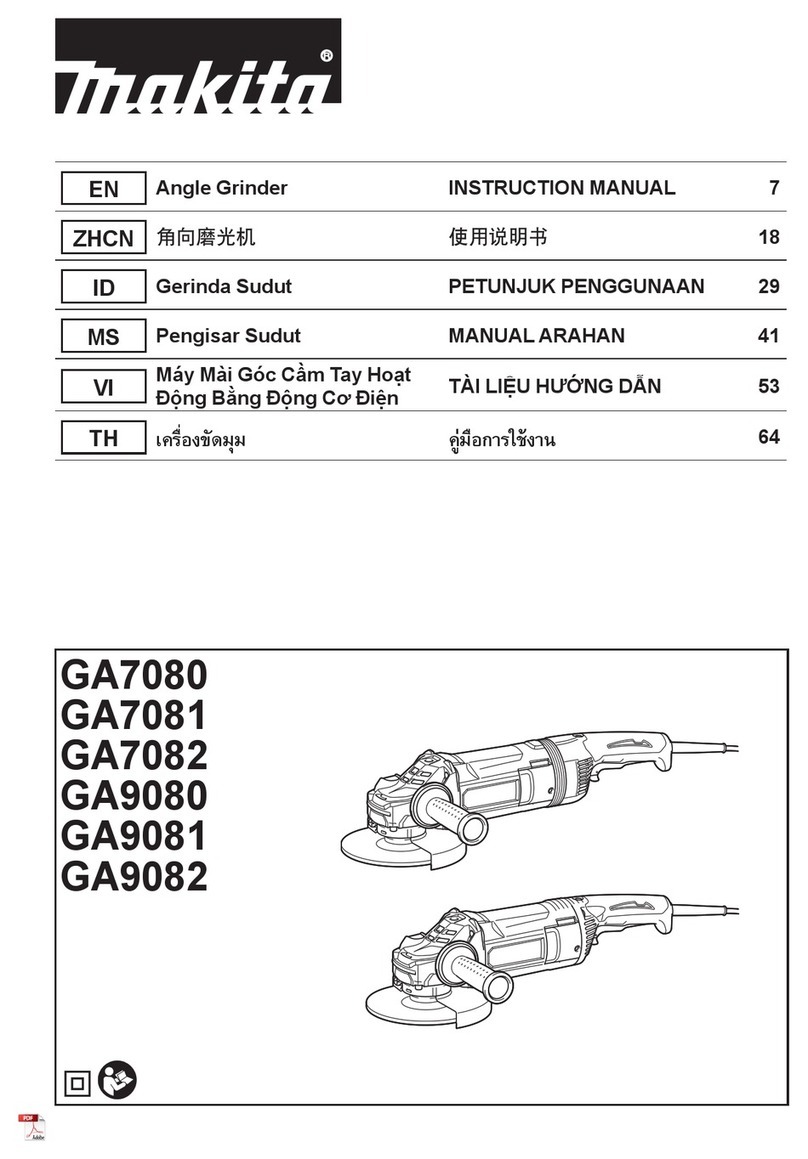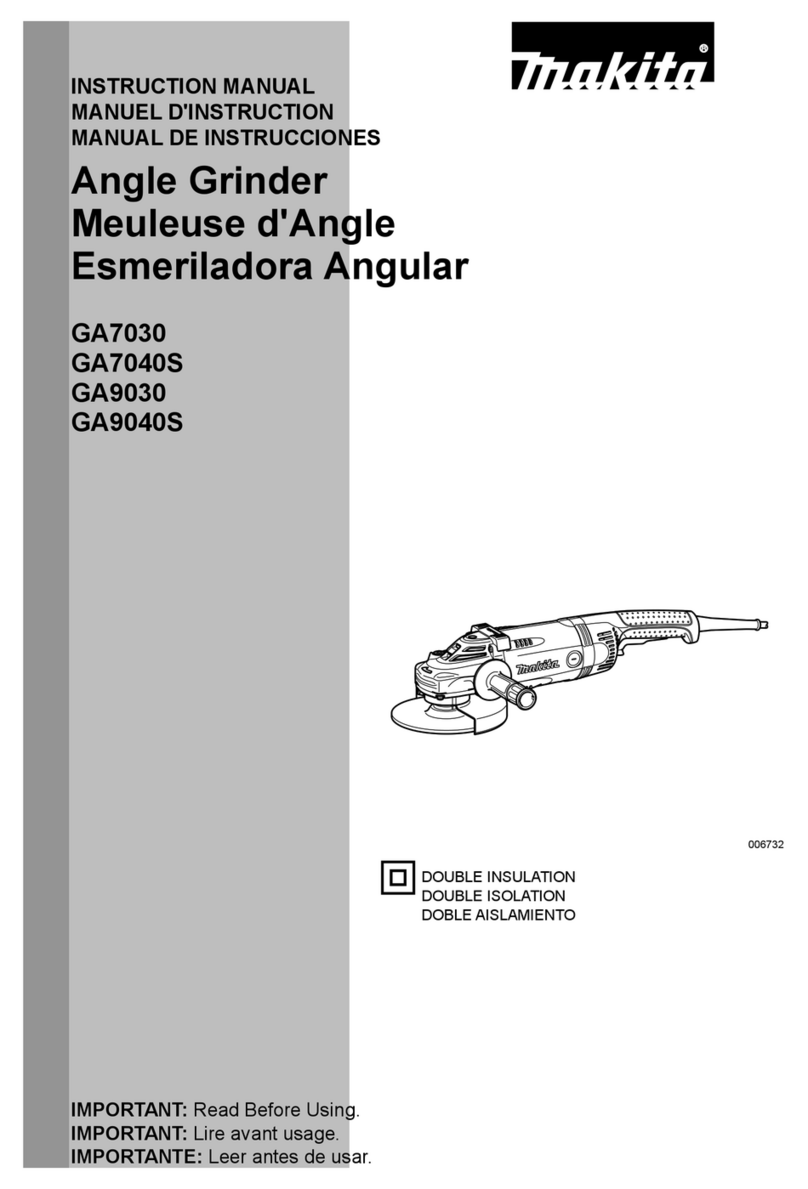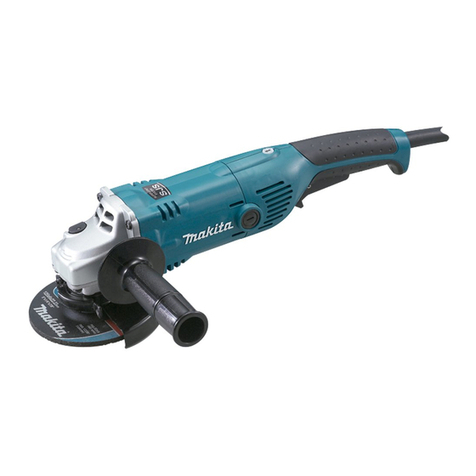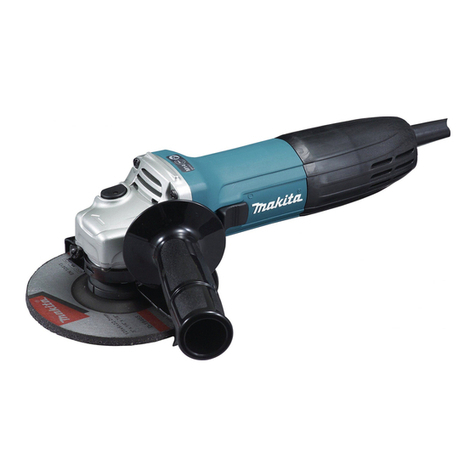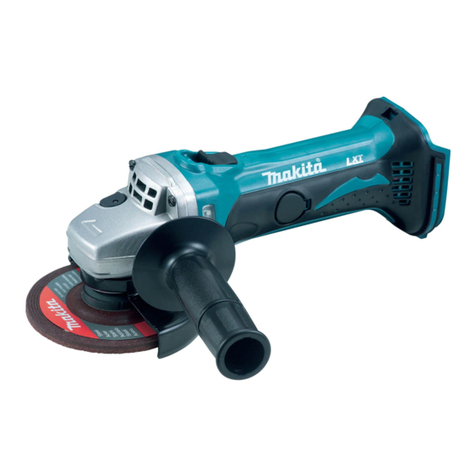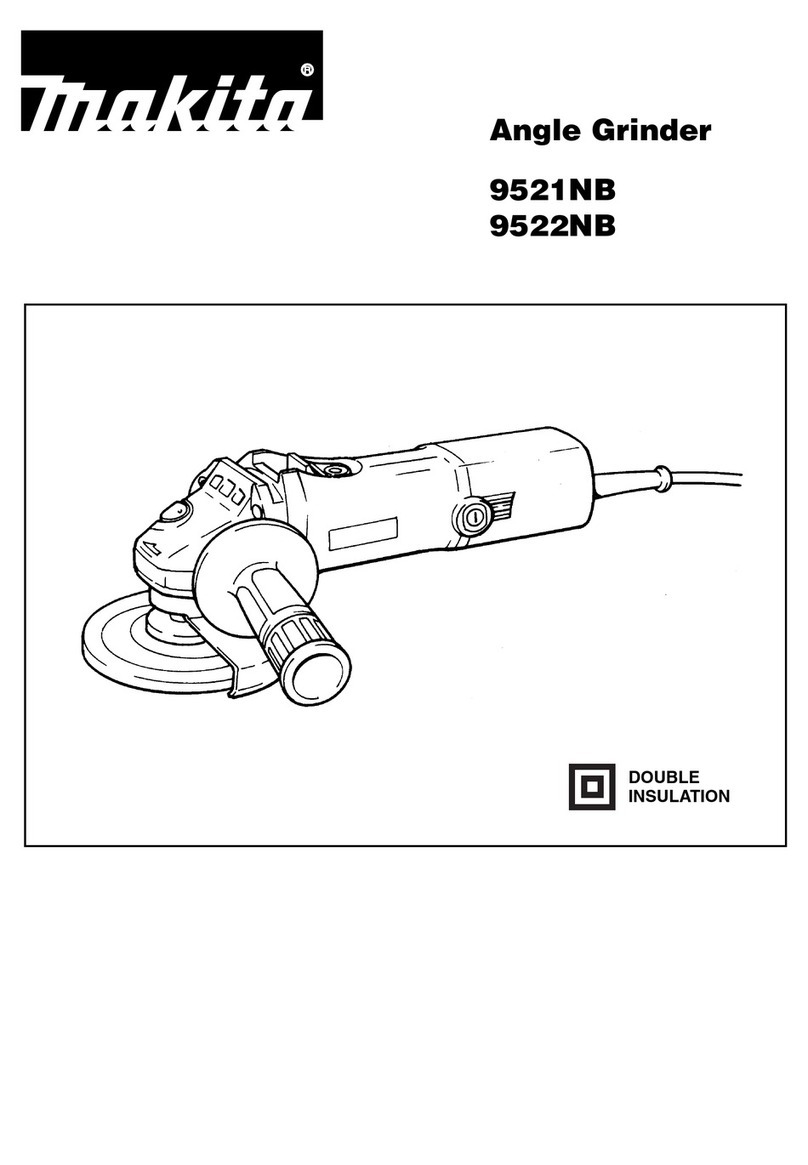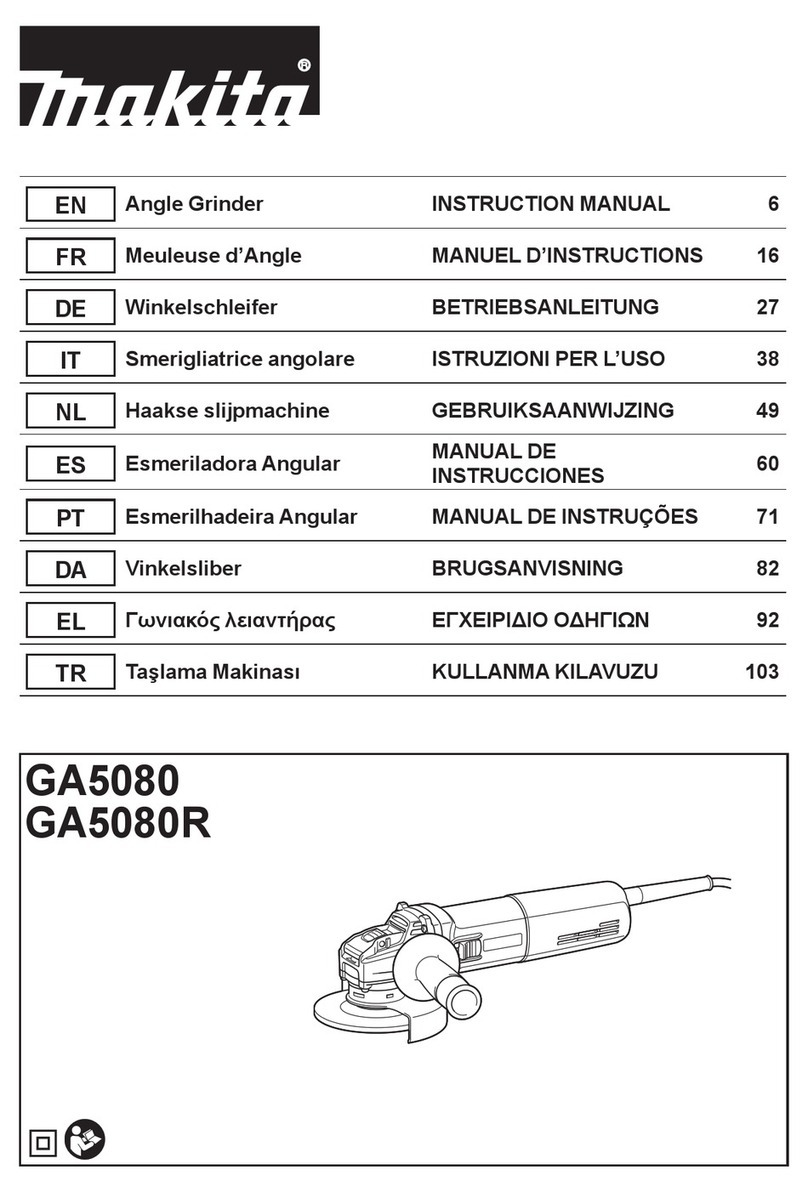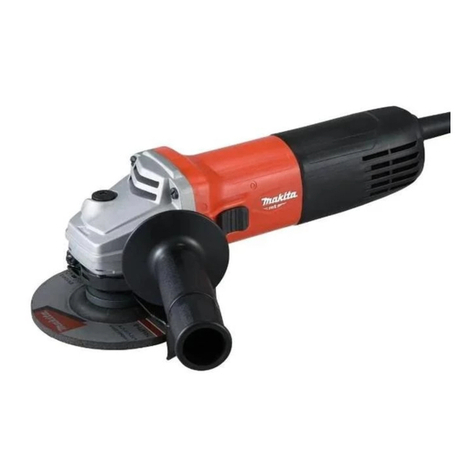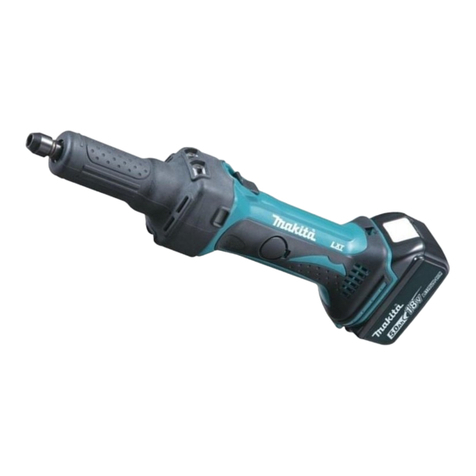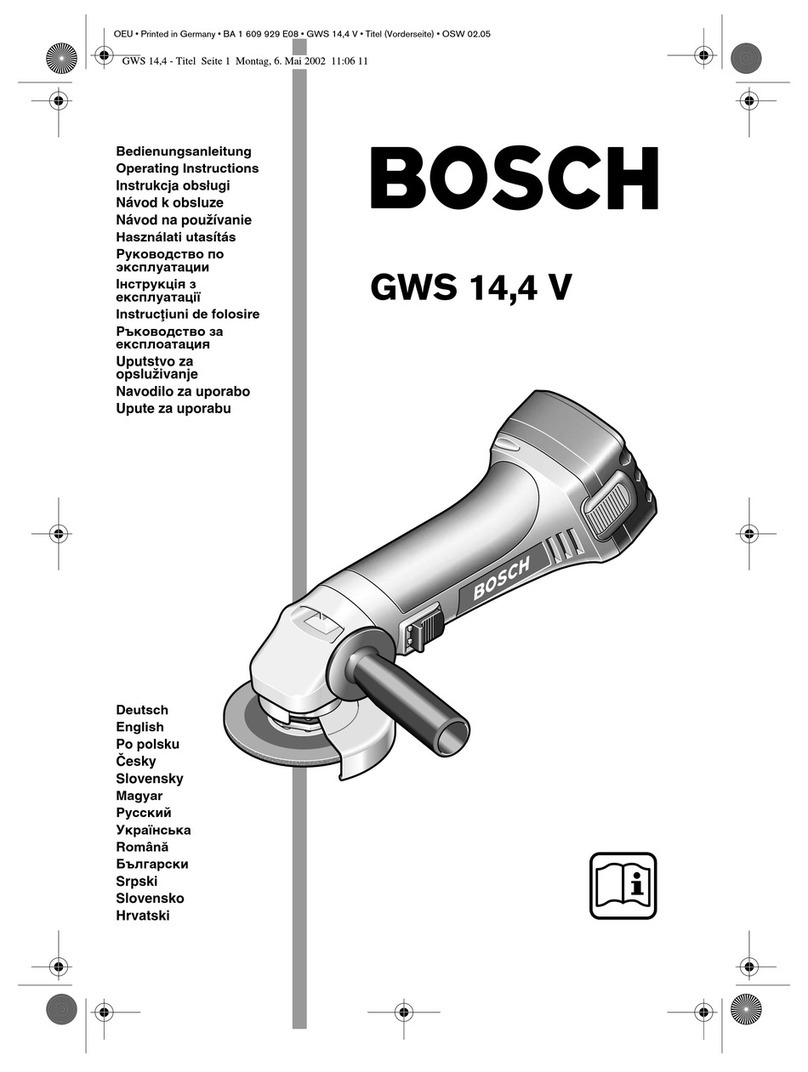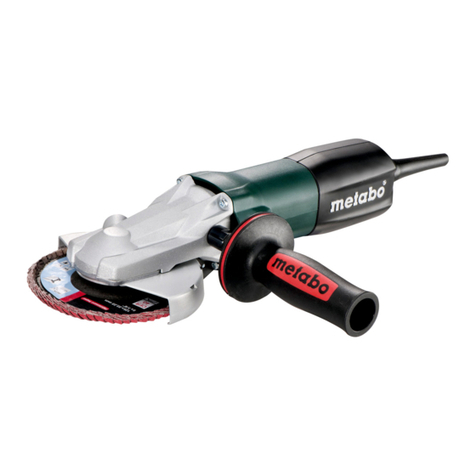
8ENGLISH
10. Hold the power tool by insulated gripping
surfaces only, when performing an operation
where the cutting tool may contact hidden
wiring. Contact with a "live" wire will also make
exposed metal parts of the power tool "live" and
could give the operator an electric shock.
11. Never lay the power tool down until the acces-
sory has come to a complete stop. The spinning
12. Do not run the power tool while carrying it at
your side.
13. Regularly clean the power tool’s air vents. The
motor’s fan will draw the dust inside the housing
and excessive accumulation of powdered metal
14.
materials. Sparks could ignite these materials.
15. Do not use accessories that require liquid
coolants.
Kickback and Related Warnings
-
-
entering into the pinch point can dig into the surface of
operator, depending on direction of the wheel’s move-
1.
position your body and arm to allow you to
resist kickback forces. Always use auxiliary
handle, if provided, for maximum control over
kickback or torque reaction during start-up.
-
2. Never place your hand near the rotating acces-
sory.
3. Do not position your body in the area where
power tool will move if kickback occurs.
to the wheel’s movement at the point of snagging.
4. Use special care when working corners, sharp
edges etc. Avoid bouncing and snagging the
accessory.
5. Do not attach a saw chain woodcarving blade
or toothed saw blade.-
1. Use only wheel types that are recommended
designed for the selected wheel. Wheels for
2. The grinding surface of centre depressed
wheels must be mounted below the plane of
the guard lip.
3.
The guard must be securely attached to the
power tool and positioned for maximum safety,
so the least amount of wheel is exposed towards
the operator. The guard helps to protect the opera-
with wheel and sparks that could ignite clothing.
4.
Wheels must be used only for recommended
applications. For example: do not grind with the
intended for peripheral grinding, side forces applied
5.
of correct size and shape for your selected
wheel.
6. Do not use worn down wheels from larger
power tools. Wheel intended for larger power tool
1. -
sive pressure. Do not attempt to make an
excessive depth of cut. Overstressing the wheel
-
2. Do not position your body in line with and
behind the rotating wheel. When the wheel, at
-
3. When wheel is binding or when interrupting
tool and hold the power tool motionless until
the wheel comes to a complete stop. Never
cut while the wheel is in motion otherwise
kickback may occur. Investigate and take correc-
4. Do not restart the cutting operation in the
workpiece. Let the wheel reach full speed and
carefully re-enter the cut.
the workpiece.
5. Support panels or any oversized workpiece to
minimize the risk of wheel pinching and kick-
back. Large workpieces tend to sag under their
workpiece near the line of cut and near the edge
